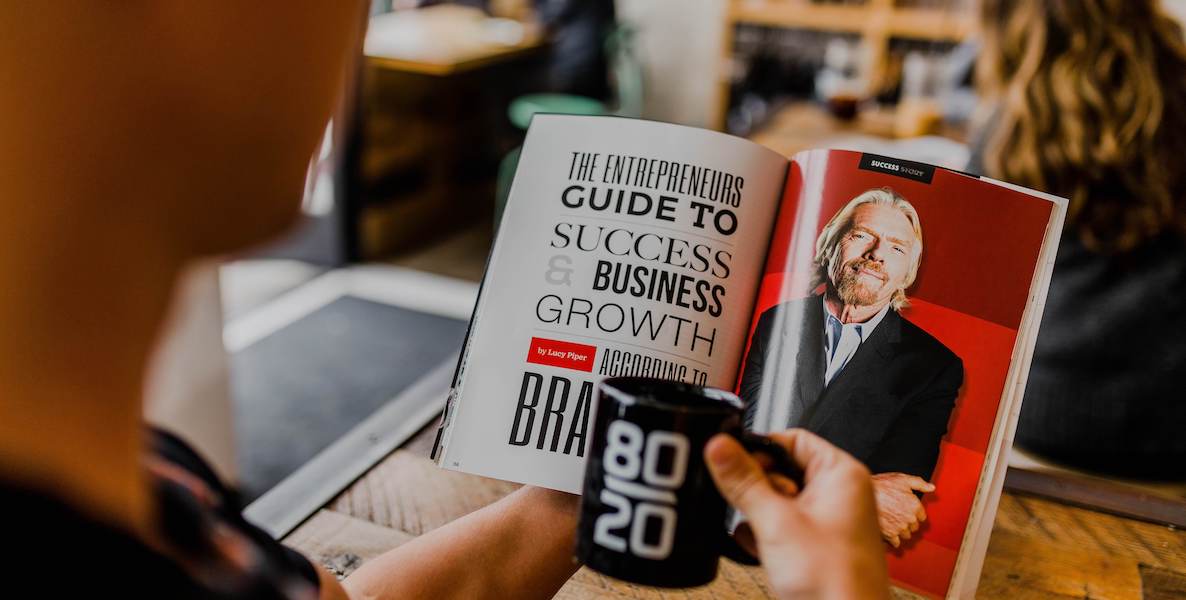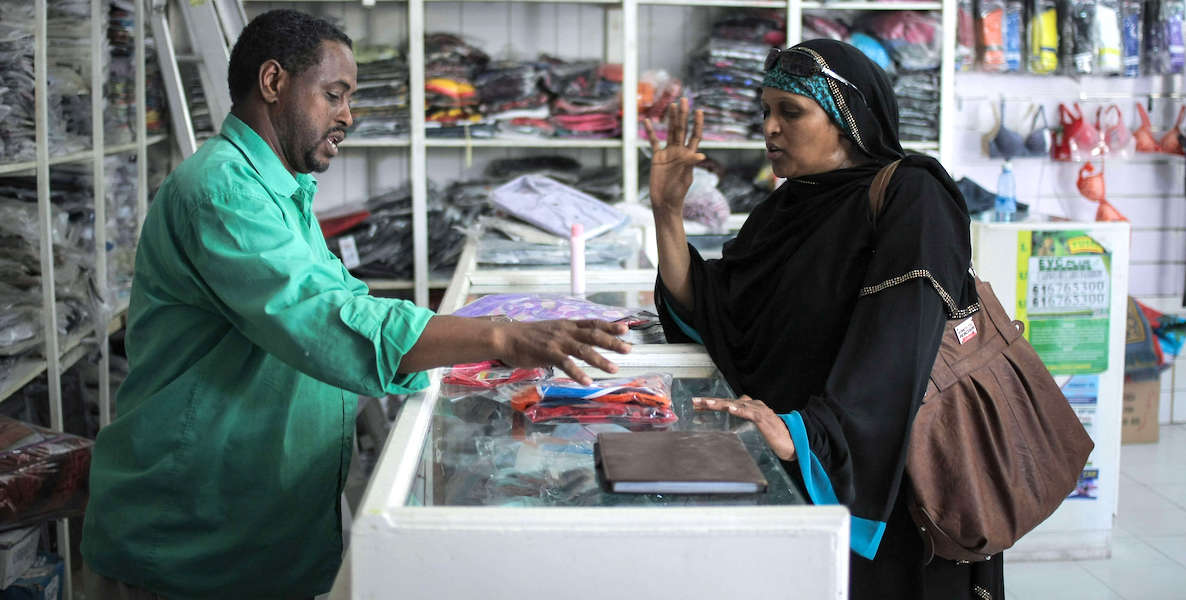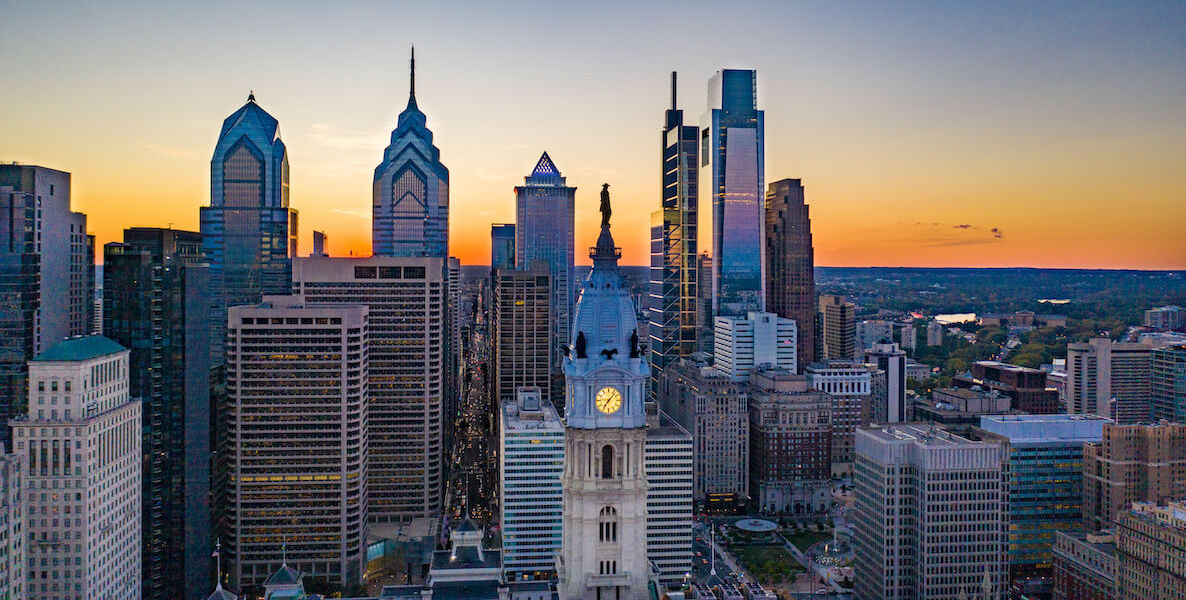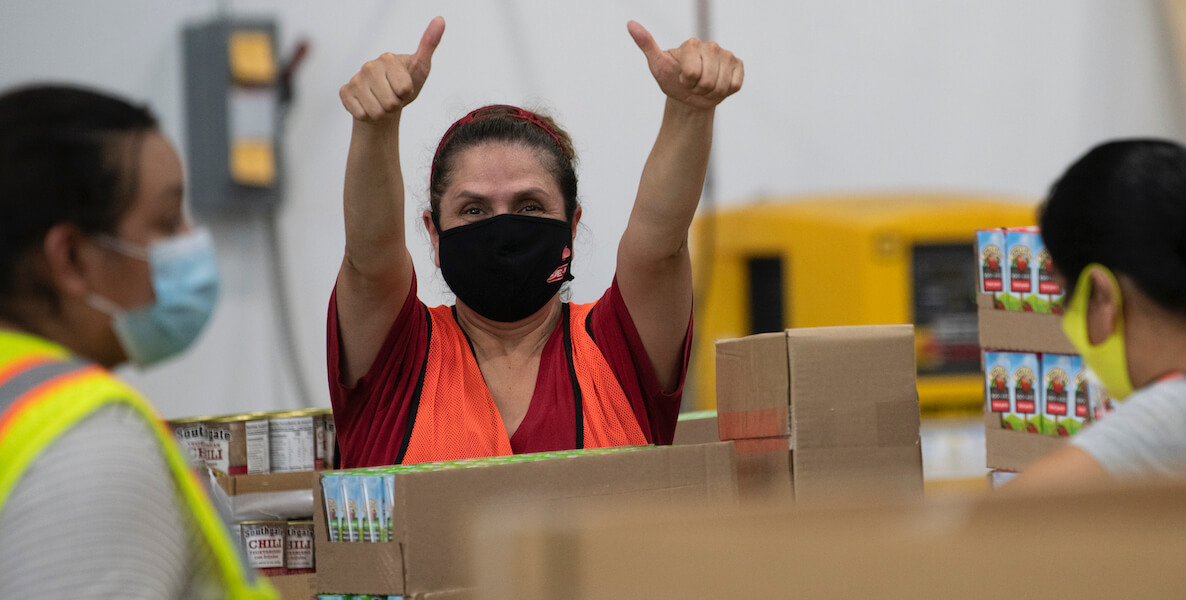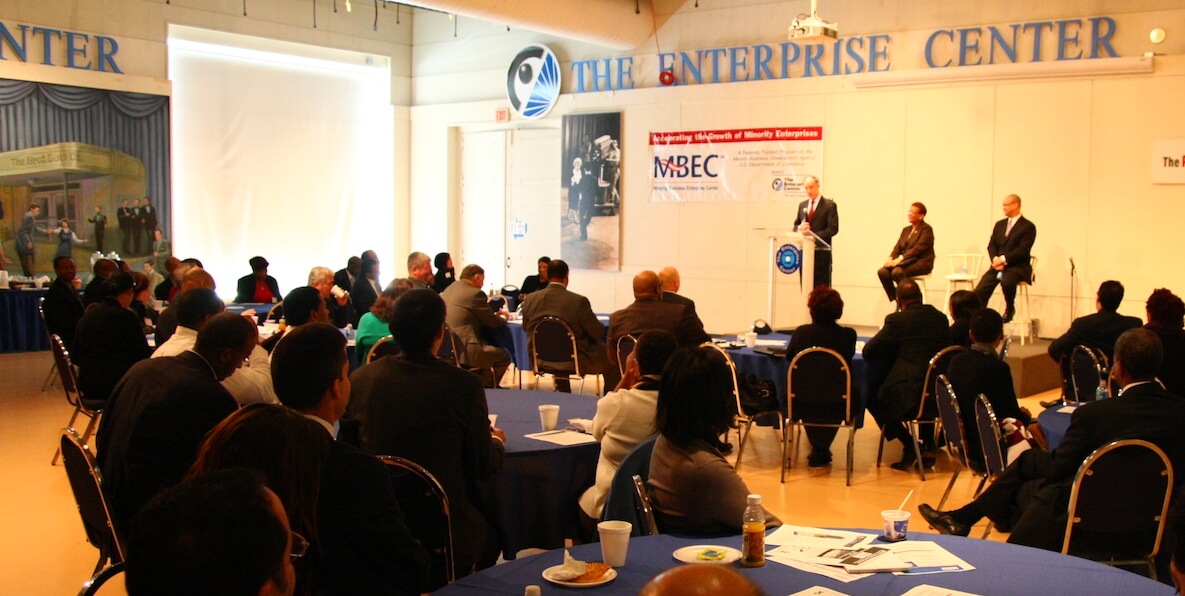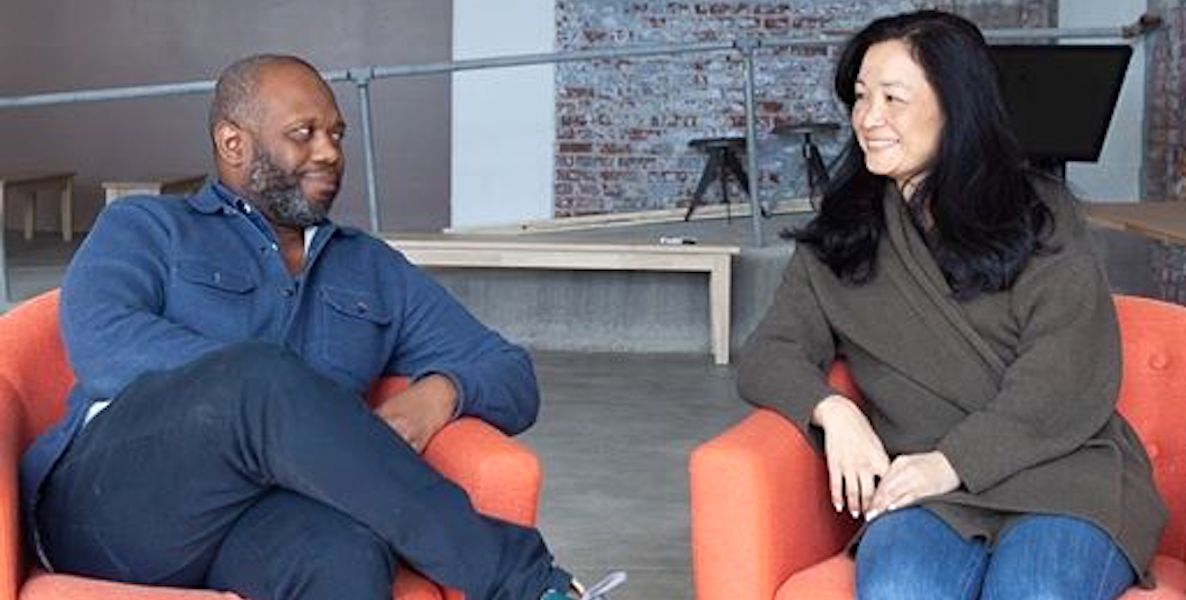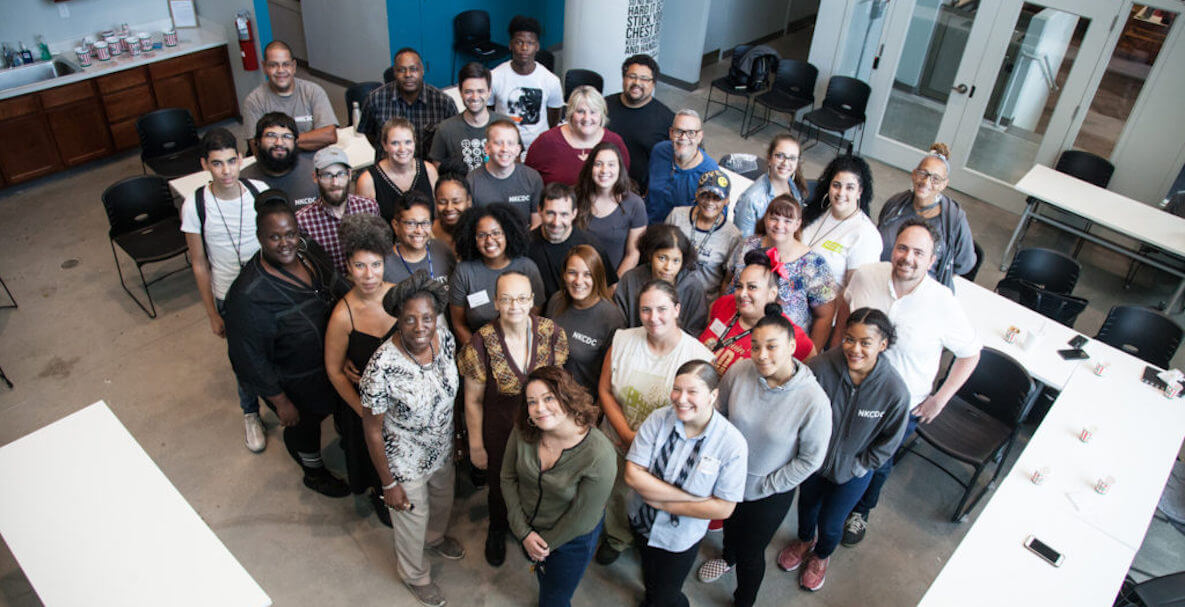After months of inaction, Congress has finally passed a relief package. After seemingly endless eleventh-hour machinations, the final bill contained very few surprises when it came to its $325 billion of small business relief: $284 billion dedicated to the Paycheck Protection Program (PPP), with numerous set-asides; $20 billion to Economic Injury Disaster Loan (EIDL) advances; $15 billion to emergency grants to event venues; and $6 billion to a variety of other small business programs.
This is much needed relief and we are glad it finally passed. Yet, despite all the media attention given to Congress’ near midnight act, and President Trump’s dismissal of the bill, the strength of local networks will determine its full success.
Philadelphia is pioneering a networked effort to reach vulnerable businesses that can serve as a blueprint for the nation
In the first round of PPP, unbanked and underbanked businesses, which are disproportionately Black- and brown-owned, were less likely to participate, given the program’s reliance on the mainstream banking system. Many of these business owners, and the families and employees they support, have needlessly suffered as a result of design problems in distributing the first round of PPP. We cannot repeat this mistake.
The Enterprise Center program aims to serve as a lifeline for at least 5,000 Black- and brown-owned business owners to complete their PPP applications.
The Enterprise Center in Philadelphia (run by one of the authors) saw this challenge coming a month ago. In response, they got organized and created a program to build support for and distribution channels to Black and brown entrepreneurs. This program should be used as a national model for fairly distributing PPP relief. Through The Enterprise Center, Philadelphia has a chance to lead the nation in modeling both how to prepare small businesses for the PPP as well as coordinate business support and capital access over the long haul.
The Challenge of PPP: Who gets money when?
Even with Congressional revisions, ensuring that PPP reaches disadvantaged businesses in a timely manner ultimately falls to local stakeholders.
![]() To understand this, it’s important to review what’s included in the latest round of the PPP. This bill opened up a window for $284.45 billion in second-draw forgivable PPP loans. It’s estimated that this money will start to be distributed as-early-as New Year’s Day and the distribution window will be open until the end of March 2021.
To understand this, it’s important to review what’s included in the latest round of the PPP. This bill opened up a window for $284.45 billion in second-draw forgivable PPP loans. It’s estimated that this money will start to be distributed as-early-as New Year’s Day and the distribution window will be open until the end of March 2021.
In addition to opening up the spigot of PPP funds, congress made a few tweaks to the initial program design. They clarified forgivability terms, allowing up-to-40 percent of expenses to be used for eligible, non-payroll costs. They lowered the cap for maximum loans, a $2 million maximum loan, down from $10 million.
Finally, much to the ire of businesses operating at reduced capacity, they maintained the payroll focus for loan qualification (but with key modifications): businesses with fewer than 300 employees may borrow up to 2.5x their average monthly payroll costs and 3.5x if they are in accommodation and food service, the hardest hit sector.
Congress sought to address distributional problems in the earlier rounds of PPP by establishing a series of set-asides for the most disadvantaged businesses and lenders. Most notably the relief package created two types of set asides:
- Borrower set asides. These are two set-asides for small businesses borrowers with 10 or fewer employees and businesses located in Low to Moderate Income (LMI) areas applying for loans up to $250,000: a $15 billion set-aside for first-time PPP borrowers; and a $25 billion set-aside for second PPP loans.
- Lender set asides. These are two set asides for community lenders that were established in the second round of PPP and funded again with this round: $15 billion for small community banks, small credit unions, and small agricultural credit institutions; and $15 billion for mission-based community lenders like community development financial institutions (CDFIs), certified development companies (CDCs), minority depository institutions (MDIs), and SBA Microloan intermediaries.
These set asides for the smallest businesses and community lenders will undoubtedly help spur a fairer distribution, and a $70 billion carve-out from the whole PPP is certainly a significant set aside (it is over three times what the SBA lent through the mainstay 7 (a) guarantee program last year).
But, the ability for this money to have an impact will largely be determined by the strength of local community finance infrastructure and small business ecosystems, which vary widely across the country.
In the end, the ability to reach the most vulnerable businesses requires a new small business ecosystem––one that gives disadvantaged businesses the financial navigation they need from a closely knit network of business support organizations, back office providers and banks and lenders.
Philadelphia is an emerging model for how to do this well.
The Enterprise Center’s PPP Prep Program
![]() Late in November, The Enterprise Center began having conversations that foretold the distributional problems of PPP on the horizon. In response, they started to organize and prepare a plan to ensure the relief reached Black and brown business owners. Their plan, and the ensuing program––PPP Prep––is an example of how to ensure this round of PPP is fairer than the first.
Late in November, The Enterprise Center began having conversations that foretold the distributional problems of PPP on the horizon. In response, they started to organize and prepare a plan to ensure the relief reached Black and brown business owners. Their plan, and the ensuing program––PPP Prep––is an example of how to ensure this round of PPP is fairer than the first.
The Payroll Protection Program PREP (PPP PREP) is a collaborative initiative among local chambers of commerce, business service providers, CDFIs, banks, and funders to provide PPP preparation services to Philadelphia small businesses to get them ready for stimulus dollars. PPP PREP will focus on outreach to support the businesses who missed previous rounds of PPP loans.
Many Black and brown business owners, and the families and employees they support, have needlessly suffered as a result of design problems in distributing the first round of PPP. We cannot repeat this mistake.
The program aims to serve as a lifeline for at least 5,000 Black- and brown- owned business owners complete their PPP applications. It will help them get their paperwork ready now, so they can apply early for PPP funds and stay open. In Philadelphia it has the potential to help Black- and brown-owned businesses access $1 billion of forgivable loans.
Mighty as it is, The Enterprise Center cannot do this momentous task alone; we all need to help Black- and brown-owned businesses get their PPP paperwork ready now.
Fortunately, the way PPP PREP functions is elegantly straightforward and can be easily replicated
The Enterprise Center has leveraged its impact by partnering with the Asian American Chamber of Commerce of Greater Philadelphia, The Urban League, and African American Chamber of Commerce PA, NJ, DE; and the Greater Philadelphia Hispanic Chamber of Commerce. Each group has reached out to their constituencies with a five-step process for getting Black- and brown-owned businesses prepared for PPP:
- Fill out an intake form to receive the latest updates and make an appointment for virtual application assistance.
- Consult an accountant or bookkeeper to prepare 2019 and 2020 financial statements as soon as possible to make sure they are in good order.
- Review required document checklists that were released prior to previous rounds of PPP (this one will likely require similar documents).
- Assemble 2020 payroll documentation, including payroll journals.
- Organize paperwork & prepare to apply when PPP opens.
In addition to recommending this process, The Enterprise Center has identified a core of service providers to help achieve the plan. These service providers target Black- and brown-owned businesses. They will be tasked with doing outreach to these businesses and helping with upfront paperwork. For their work, they will be paid a flat fee for each small business that they certify as “PPP Ready,” having completed 100 percent of the PPP application checklist.
PPP PREP solves three problems at once
- PPP PREP helps overcome long standing data deficiencies. By utilizing a data-intake form, it addresses the lack of quality data on Black- and brown-owned businesses by building its own database of business owners by size and sector. This deficiency of information on Black- and brown-owned businesses consistently undermines business owners as they seek to advocate for additional resources and support.
- PPP PREP makes sure we don’t have a repeat of round one of PPP. By preparing Black and brown business owners for PPP, the PPP PREP program helps ensure that the federal relief program will quickly, and fairly, get to the businesses who need it.
- PPP PREP helps build a long-term ecosystem for recovery. By engaging, and compensating, a network of service providers to engage in preparation work for Black- and brown-owned small businesses, The Enterprise Center is cultivating the connective tissue of a small business ecosystem. This ecosystem, and the organizations that bind it together, will be vital as the country moves from an economic relief to an economic recovery phase of the coronavirus pandemic. As we’ve previously written, harnessing the power of local institutions will be vital for an inclusive recovery.
A call to action: A get ready campaign in Philadelphia and around the nation
As we wrote in November, local stakeholders do not have time to spare to get organized for the forthcoming federal spend. It is now here. Local leaders must get organized now. They should follow Philadelphia’s model to build a strong infrastructure to get PPP money to their smallest entrepreneurs. Local economic leaders should:
- Identify core entrepreneurial service providers for businesses owned by entrepreneurs of color;
- Develop a “PPP ready” checklist to certify that entrepreneurs of color have all their paperwork together to successfully apply for PPP loans;
- Set a goal for number of PPP Ready Businesses, raise capital, and develop a flat-fee model to incentivize service providers to partake;
- Launch a Get Ready campaign of outreach to entrepreneurs;
- Ensure that small enterprises with the right paperwork get routed to banks and others that can execute the PPP loans, to ensure that the capital gets to businesses that need it in a timely manner.
Banks and others who are making large philanthropic contributions have a role to play too
they should immediately fund PPP PREP efforts across the country to ensure that Black- and brown-owned businesses are on equal footing to apply for PPP dollars and can make it through the winter. This is a pressure-test for their commitments to racial equity.
The ability to reach the most vulnerable businesses requires a new small business ecosystem––one that gives disadvantaged businesses the financial navigation they need from a closely knit network of business support organizations, back office providers and banks and lenders.
There is a relatively short time window in which this must happen. President Trump’s late night diatribe against the relief package may have bought local stakeholders some time to get aligned to prepare their Black- and brown-owned businesses for PPP. But even so, this is no light lift, given the fragile nature of these businesses and the surge in Coronavirus cases. This work is necessary if we want to avoid the mistakes of the first round of PPP.
![]() Fortunately, buried within the 5,500 pages of the Coronavirus relief and omnibus bill, there is some help. The bill extended the deadline for spending the the flexible block-grant money in the Coronavirus Relief Fund until December 31, 2021. These funds must be spent in a way that was not anticipated in the previous year’s budget. This gives local stakeholders a full additional year to spend these funds in ways that strengthen intermediaries for distributing PPP funds.
Fortunately, buried within the 5,500 pages of the Coronavirus relief and omnibus bill, there is some help. The bill extended the deadline for spending the the flexible block-grant money in the Coronavirus Relief Fund until December 31, 2021. These funds must be spent in a way that was not anticipated in the previous year’s budget. This gives local stakeholders a full additional year to spend these funds in ways that strengthen intermediaries for distributing PPP funds.
Our hope is that these early efforts can build into longer term intermediaries to leverage future federal spending as the nation builds back better.
Della Clark is president of The Enterprise Center. Bruce Katz is founding director of the Nowak Metro Finance Lab at Drexel University. Colin Higgins is a senior research fellow at the Nowak Metro Finance Lab




